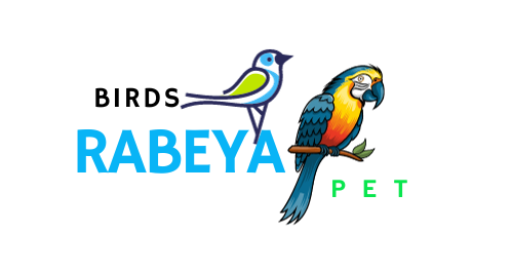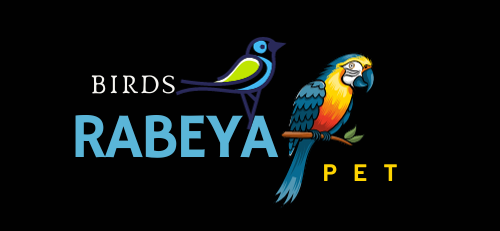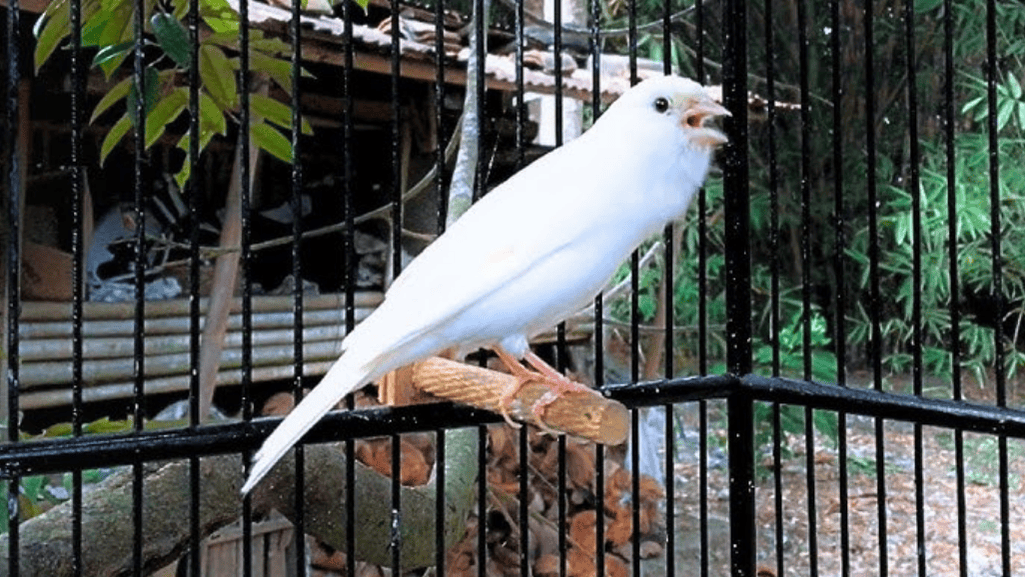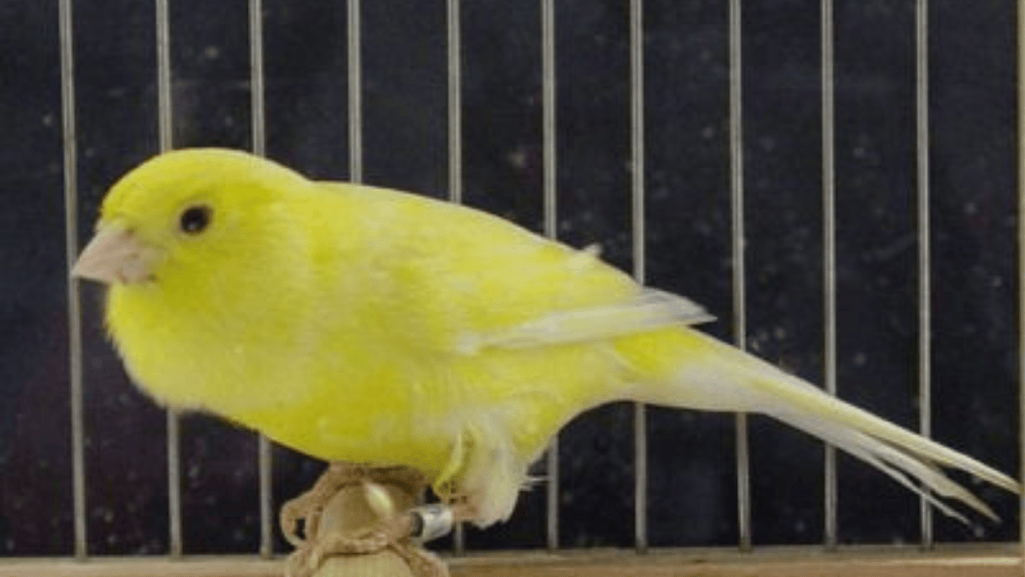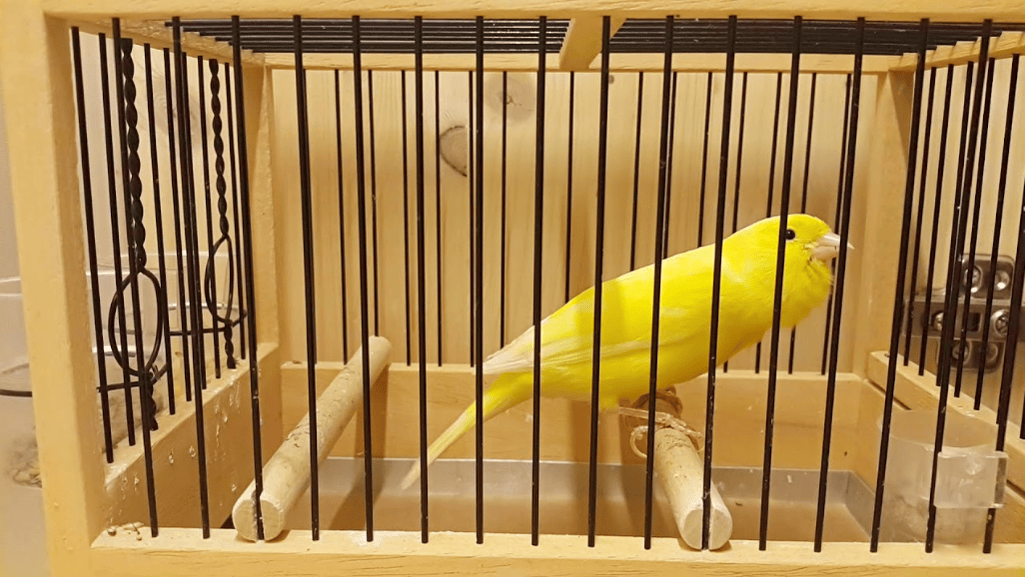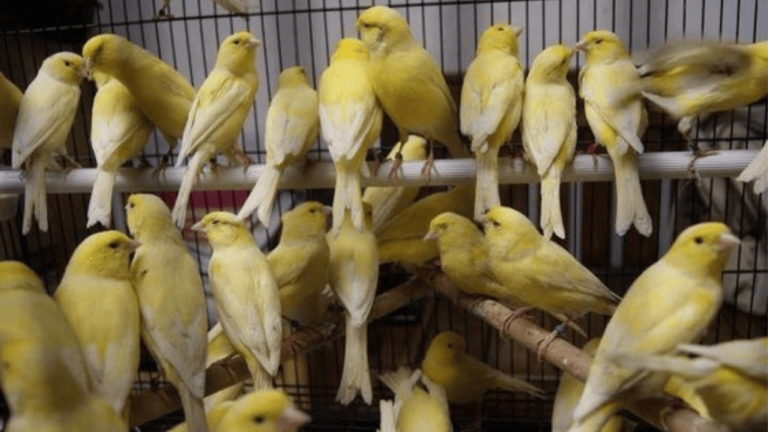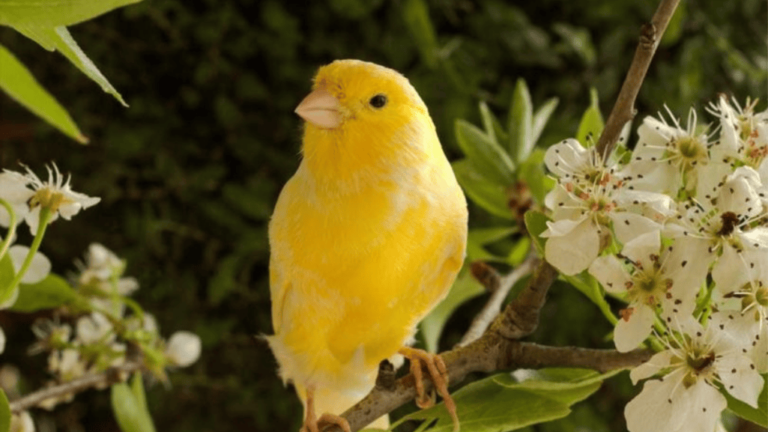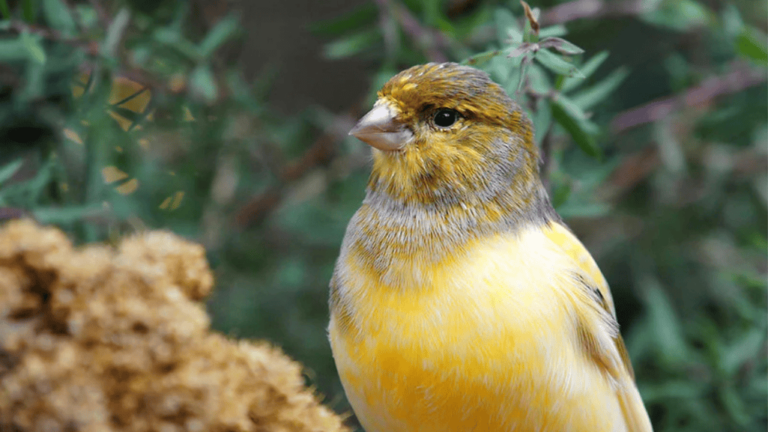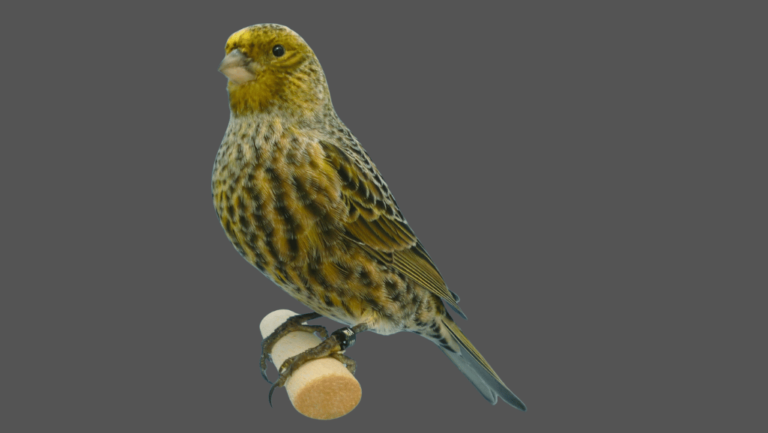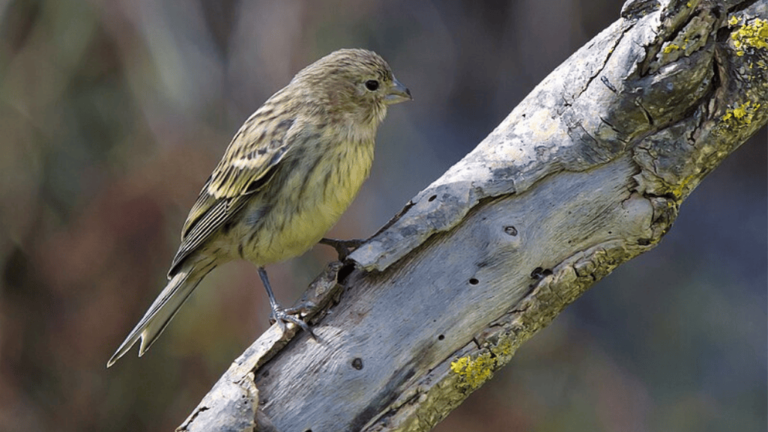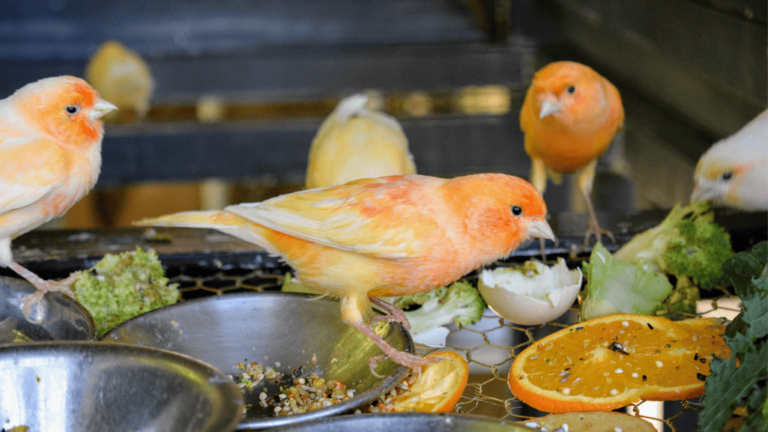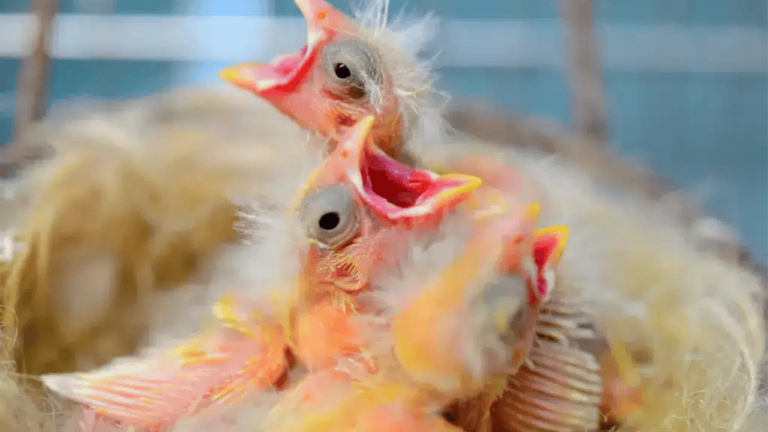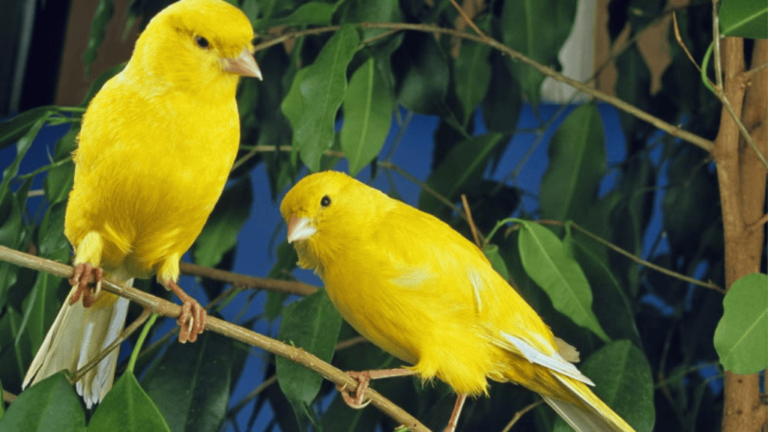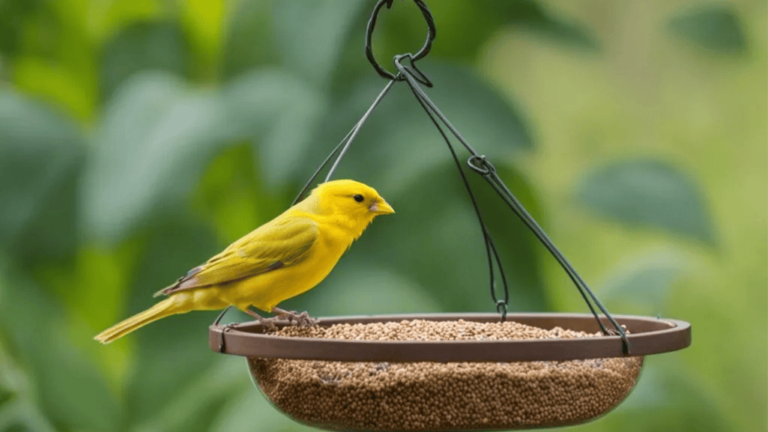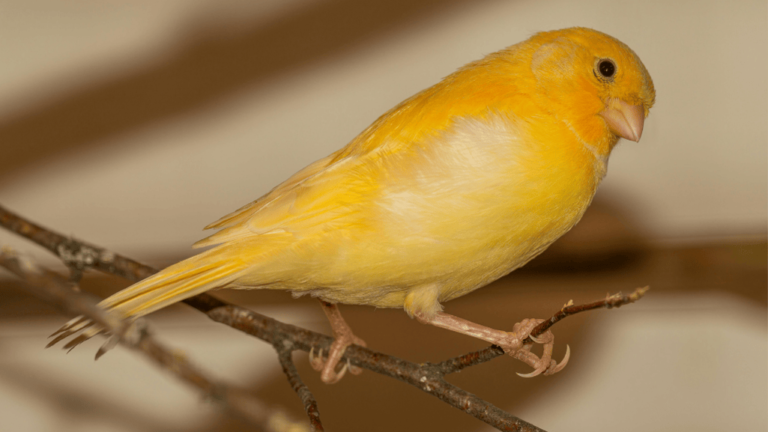Waterslager canaries have won the hearts of bird lovers around the world. Their songs sound like water, making them special. The Malinois variety is the most popular, loved by many for their beautiful singing.
Their songs are like a babbling brook, unique among canaries. Waterslagers can sing both high and low notes, pleasing many bird fans and owners.
These birds come from Belgium and have a long history. The first club for them was started in Anvers in 1872. This marked the start of a dedicated group of breeders and fans. In 1956, an international group called C.O.M. was formed to unite all canary breeds.
Key Takeaways
- Waterslager canaries are known for their unique, water-like song
- The Malinois variety is the most popular among Waterslager breeds
- Waterslagers can produce a wider range of notes than other canary types
- The breed originated in Belgium, with the first dedicated club founded in 1872
- Breeders and enthusiasts work to maintain and promote the Waterslager canary
Introduction to Waterslager Canaries
Waterslager canaries are a captivating canary variety known for their enchanting songs. These Belgian songsters are loved by many for their unique sounds. Their songs are like water droplets falling or bells ringing.
Their canary song is mesmerizing. They can sing both high and low notes in a special way.
Waterslagers are not just talented singers. They also make great pets because they are hardy and easy to care for. With the right avian nutrition and diet, they can live happily in captivity. They bring joy to their owners for many years.
Bird breeding fans love Waterslagers for their special traits. Many work hard to keep this amazing song canary breed alive.
Waterslagers are generally healthy birds. But, they need regular vet visits and a clean, big home. A varied diet, fresh water, and fun toys keep them happy. With proper care, Waterslager canaries can brighten up any home with their beautiful songs and charming nature.
History and Origins of the Waterslager Breed
The Waterslager canary is one of the oldest canary breeds, coming from Belgium. Its exact origins are a bit of a mystery, but it’s thought to have come from Flanders. There, breeders worked with large yellow canaries to create birds with amazing songs.
The history of the Waterslager is closely tied to the art of canary singing. Breeders worked hard to perfect the breed’s unique singing abilities.
Development in Belgium from Harz Stock
The Waterslager breed was likely created by crossing with other canaries. These included the Great Holland Canary and German birds from the Tyrol. The goal was to improve the canary’s song and create a unique sound.
Establishment of the First Waterslager Club in Anvers, 1872
In 1872, a big event happened in Anvers, Belgium. The first Waterslager club was formed. This club brought together breeders who wanted to improve the Waterslager’s song.
The club’s creation was a key moment. It recognized the Waterslager as a special and valuable canary variety.
Crossbreeding with Other Canary Varieties
Breeders worked hard to perfect the Waterslager’s song. They crossed it with other canaries to enhance its vocal abilities. This effort helped create the Waterslager’s unique sound.
Today, the Waterslager canary is loved by many. Its history, thanks to Belgian breeders and the first club, has made it an iconic breed. Canary shows showcase these birds, keeping their legacy alive.
Unique Characteristics of Waterslager Canaries
Waterslager canaries have won the hearts of many with their beautiful, water-like song. Their songs sound like a babbling brook or a stream. These birds stand out because of their unique songs, making them a favorite among bird lovers.
Distinctive Watery, Bubbling Song
The Waterslager canary’s song is its most striking feature. It sounds like a gentle waterfall or a stream, calming everyone who hears it. This sound has been perfected over centuries through careful breeding and training.
Ability to Produce Higher and Lower Notes
Waterslager canaries can sing both high and low notes, unlike any other canary. This talent lets them create complex melodies. Their wide range adds depth to their songs, making them a joy to listen to.
Quiet Singing Style with Closed Beak
Waterslager canaries sing softly, with their beaks closed. This quiet style creates a soothing background sound. They can also sing louder when needed, showing their flexibility.
These canaries are small, measuring 4 3/4 to 8 inches and weighing under 1 ounce. Despite their size, they can live up to 15 years with good care.
Physical Appearance of Waterslager Canary Birds
Waterslager canaries are known for their singing, but they also look unique. They have a curved stance and a slender body. Their small head adds to their charm.
The most common color is a bright, uniform yellow. They often have a small dark spot on their head.
Over time, ticked Waterslagers have become popular. They have a mix of dark feathers. This adds an interesting look to their already captivating appearance.
Waterslagers are longer than most canaries. This is because they have Great Yellow Canary bloodlines in them.
The plumage of Waterslager canaries is stunning. They stand out in shows and competitions. Their looks and song make them popular worldwide.
“The Waterslager canary’s physical appearance is a perfect complement to its enchanting song, creating a harmonious blend of visual and auditory delight.”
Exploring Waterslager canaries, look for different colors and looks. These variations make each bird special and worth cherishing.
Waterslager Canary Care and Husbandry
Waterslager canaries are loved for their beautiful songs and lively personalities. To keep them happy, they need the right home, food, and vet care. Canariculture, the art of caring for canaries, has grown a lot. Waterslager clubs and bird lovers share their knowledge to help.
Housing Requirements
Canaries need lots of room to fly and play. Their cage should be big enough for them to move around. For one bird, the cage should be at least 16″ (40 cm) wide. For two, it should be 20″ (50 cm).
Include perches, toys, and hiding spots to keep them happy. Canaries love open spaces, so choose a cage that’s wide and tall.
Diet and Nutrition
Waterslager canaries eat a lot, up to 30% of their body weight each day. They need a good seed mix, fresh fruits and veggies, and some protein. Here are some important tips:
- They eat about one teaspoon of seed a day and don’t overeat.
- Give them extra protein like egg biscuits once a week.
- Change their food and water every day. You can add vitamins too.
- Make sure they always have fresh water, as they can’t go without it for 24 hours.
Health Concerns and Veterinary Care
Regular vet visits and a clean home are key to keeping your canary healthy. Watch out for respiratory infections, feather mites, and obesity. If you notice any health issues, get vet help fast.
“The key to a happy and healthy waterslager canary is a combination of a spacious home, a nutritious diet, and regular veterinary care.”
With the right care, you can enjoy your waterslager canary for many years. Whether you’re new to birds or have experience, caring for these birds is incredibly rewarding.
Training and Enhancing Waterslager Canary Song
For songbird hobbyists and avian experts, training Waterslager canaries is exciting. These Belgian songsters are known for their unique songs. They can sing both high and low notes quietly.
Young male Waterslagers go through a “song school” to learn their songs. They live in small cages and listen to an experienced male’s song. It takes at least four weeks for them to start singing well. It can take up to a year for them to sing their full song.
To get ready for canary exhibitions and canary shows, breeders start a darkening process two weeks before. They listen to the birds in artificial light with heavy curtains. When showing birds, they should be on the table for no more than 10 minutes.
In song competitions, judges look at different aspects of the song. Each aspect gets points based on how well the bird sings. Judges can also give up to 3 points for the overall song impression.
“The beauty of the Waterslager canary’s song lies in its complexity and the dedication of the breeders who nurture these talented songbirds.”
Understanding Waterslager canary songs and how to improve them is rewarding. It shows the art and science behind these Belgian songsters.
Waterslager Canaries in Aviculture and Competitions
Waterslager canaries have won the hearts of bird hobbyists and aviculturists globally. Their enchanting songs and friendly nature make them a favorite. They are a key part of the canary fancy, often seen in competitions where their song quality is judged.
In fall competitions, canaries wear leg bands with their birth year, band number, and breeder’s club. Judges look for specific sounds in their songs, like water and deep tones. About 50% of the birds in competitions are hens, showing that some females can sing beautifully too.
Popularity Among Bird Enthuasiasts
Waterslager canaries have been popular among bird lovers for centuries. They are cherished pets and performers, loved in Europe and England. The annual world show for canary birds in Europe draws thousands, showing the birds’ widespread appeal.
Judging Criteria in Canary Shows
In canary shows, judges focus on the song quality and consistency. Breeders aim to create birds with a wide range of song elements and a consistent singing style. It’s surprising that some female canaries are mistaken for males because of their beautiful singing.
“Hen canaries participating in song-trials have the chance to win first place, challenging the belief that only male canaries are better singers.”
Notable Waterslager Champions and Breeders
Many Waterslager canaries have won singing competitions, delighting audiences with their songs. These birds bring joy to their owners and help in scientific studies. They are used to study the brain, learning, and movement, showing their importance beyond avian health and songbird care.
Comparison with Other Canary Breeds and Song Types
Waterslager canaries are famous for their unique singing. But, other canary species have their own special traits and songs. Let’s look at some popular canary breeds and see how they compare to Waterslagers.
German Roller Canaries
German Roller canaries are small, growing to 4 to 5 inches. They live about 12 years. These birds have soft, melodic calls and sing quietly with their beaks closed. Their songs are gentle and soothing, loved by many.
Spanish Timbrado Canaries
Spanish Timbrado canaries are bigger, over 5 inches long, and can live up to 15 years. They are known for their loud, metallic songs. Their calls can have up to 12 different notes, making them very powerful.
American Singer Canaries
American Singer canaries are a mix of German Rollers and Border canaries. They grow to 5.5 inches and live 10 to 15 years. They come in many colors, including buff, yellow, and orange. These birds are known for their beauty and singing talent.
Male canaries are usually better singers. They are often kept alone to improve their singing. All canaries need a balanced diet of seeds, pellets, and fresh fruits and veggies to stay healthy and sing well.
Buying and Owning a Waterslager Canary
If you’re looking for a melodious pet, a Waterslager canary is a great choice. These Belgian songsters are known for their unique sounds. They are popular among bird lovers worldwide.
Finding a reputable breeder or pet store is key. Look for a clean facility and ask about the birds’ health and care needs. Canaries have been kept as pets for over 500 years. The Waterslager breed, from Belgium, is spreading globally.
Choosing a Reputable Breeder or Pet Store
To get a healthy Waterslager canary, follow these tips:
- Check the facility’s cleanliness and organization
- Look for signs of illness in the birds
- Ask about the birds’ diet and living conditions
- Get references from other bird owners or vets
Initial Setup Costs and Ongoing Expenses
Be ready for the costs of owning a Waterslager canary. You’ll need:
- A spacious, well-ventilated cage with perches and toys
- High-quality canary seed mix and supplements
- Food and water dishes
- Cuttlebone and mineral blocks for beak and nail maintenance
- Regular vet visits and any needed meds
Canaries might cost more than other pets due to their diet and lighting needs. But their songs and personalities are worth it for dedicated owners.
Integrating a Waterslager into Your Home
Create a cozy space for your Waterslager canary. Place their cage in a quiet spot away from drafts and direct sunlight. Introduce them slowly to their new home and family.
Keep a daily routine for feeding, cleaning, and playing with your canary. With the right care, your Waterslager can bring joy and music to your home for years.
Conclusion
Waterslager canary birds have won the hearts of many around the world. Their beautiful songs and charming nature make them special. These birds come from Belgium and have been loved by many for over a century.
It’s important to know how to care for Waterslager canaries. This includes understanding their needs and how to train them. This way, you can make sure they live a happy and healthy life.
Research shows that Waterslager canaries have unique hearing abilities. Even though they age, they keep singing beautiful songs. Their songs sound like water or bells, making them very popular among bird lovers.
If you want a Waterslager canary, you need to take good care of it. This means providing the right home, food, and regular vet visits. Joining bird clubs and talking to breeders can help you find the right bird and learn how to care for it.
Waterslager canaries are perfect for anyone who loves birds. They bring joy and beauty into your home with their songs. By caring for them well, you can build a strong bond and enjoy their music together.
FAQ
What is a Waterslager canary?
Where do Waterslager canaries come from?
What do Waterslager canaries look like?
How do I care for a Waterslager canary?
How can I train my Waterslager canary to sing better?
Are Waterslager canaries popular among bird enthusiasts?
What should I look for when buying a Waterslager canary?
How can I successfully integrate a Waterslager canary into my home?
In the peaceful landscapes of the Bahamas and the Greater Antilles, the Key West Quail-Dove finds its home. Known as Geotrygon chrysia, this bird is a treasure among Florida birds. Though it doesn’t live in the Florida Keys anymore, it sometimes visits, adding beauty to the Key West wildlife. Bird watchers in bird watching Key West dream of seeing this rare bird in the tropical and dry forests, shrublands, and moist forests it loves.
Key Takeaways
- The Key West Quail-Dove is still common in the Caribbean, showing the area’s rich wildlife.
- Even though it’s not considered endangered, it has a rich history with the Florida Keys.
- Its varied diet and unique breeding habits help it adapt to different environments.
- Seeing this dove is rare but exciting, like at the Deering Estate in Miami.
- Photographing the Key West Quail-Dove is hard because it’s hard to find and lives in dense forests.
- Trying bird watching Key West might let you see this special dove, making it more thrilling.
- It’s important to understand and protect the homes of Florida birds like the Key West Quail-Dove for their future.
Exploring the Unique Characteristics of the Key West Quail-Dove
The Key West Quail-Dove is a standout among endangered birds. Its unique looks and sounds have drawn bird lovers. This bird’s story highlights the importance of ornithology Key West research.
Physical Description and Identification
This bird has a dark, rust-colored back and bronze-green sheen on its head and neck. It’s known for a white stripe on its face against its red feathers. Males are about 11 3/4 inches long and have a wingspan of 17 1/2 inches, making them a notable size among Key West birds.
Vocalization Patterns and Calls
The Key West Quail-Dove makes a beautiful “hooooooo” sound that gets louder. It also coos softly, saying “Whoe-whoe-oh-oh-oh.” These sounds help identify it in the woods. Researchers say these calls are key in mating and defending against predators.
Studies show the Vocalization patterns and physical characteristics of the Key West Quail-Dove make it special. It’s a key focus for scientists and conservationists.
Understanding the Key West Quail-Dove’s Distribution
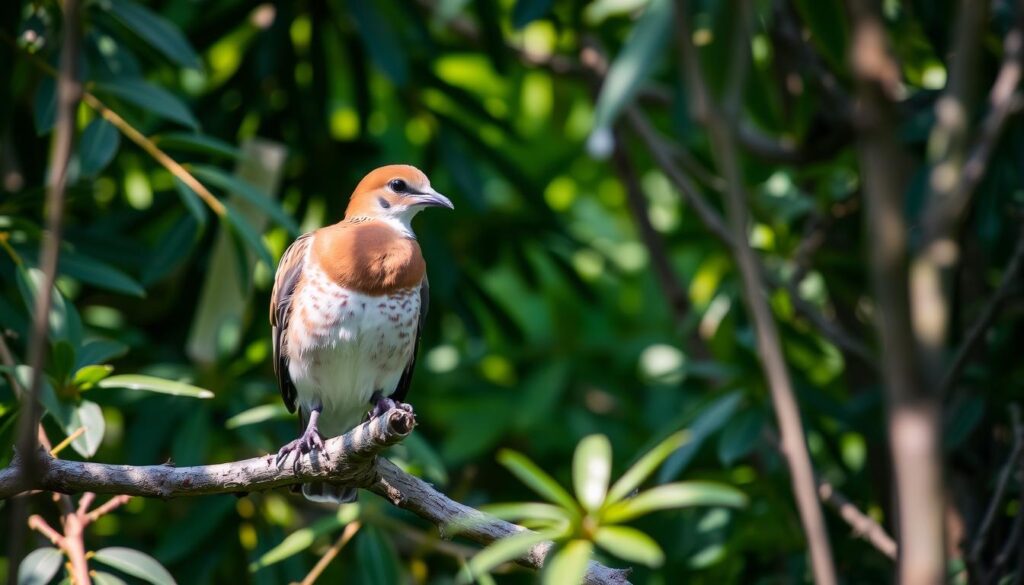
The Key West Quail-Dove is a symbol of tropical beauty, linked to the Caribbean’s lush landscapes. It lives in the Bahamas and the Greater Antilles. These places are key for bird watching destinations and bird conservation efforts.
These birds were once rare in Florida birds sightings, mainly in the southern parts of the state. The Florida Keys are famous for their wildlife and conservation efforts.
Habitats and Regions: From the Bahamas to the Greater Antilles
Key West Quail-Doves live in different habitats like dry forests and limestone areas. Their presence shows how rich and diverse their environments are. In Cuba, conservation projects help protect their habitats and many other bird species.
These birds can be found in places like New Providence and Cuba. Cuba is home to over 380 bird species and has 28 Important Bird Areas (IBAs). This makes it a key place for bird conservation efforts.
Studies show how the Key West Quail-Dove behaves and lives across its range. They sometimes appear in Florida during hurricanes or in mangrove forests during breeding season. This shows how they interact with their environments in unique ways.
Learning about the Key West Quail-Dove’s habits and habitats helps us understand Caribbean birds better. It also shows why working together is important for bird conservation. This knowledge helps protect bird watching destinations from environmental changes and human actions.
Threats to the Key West Quail-Dove’s Environment
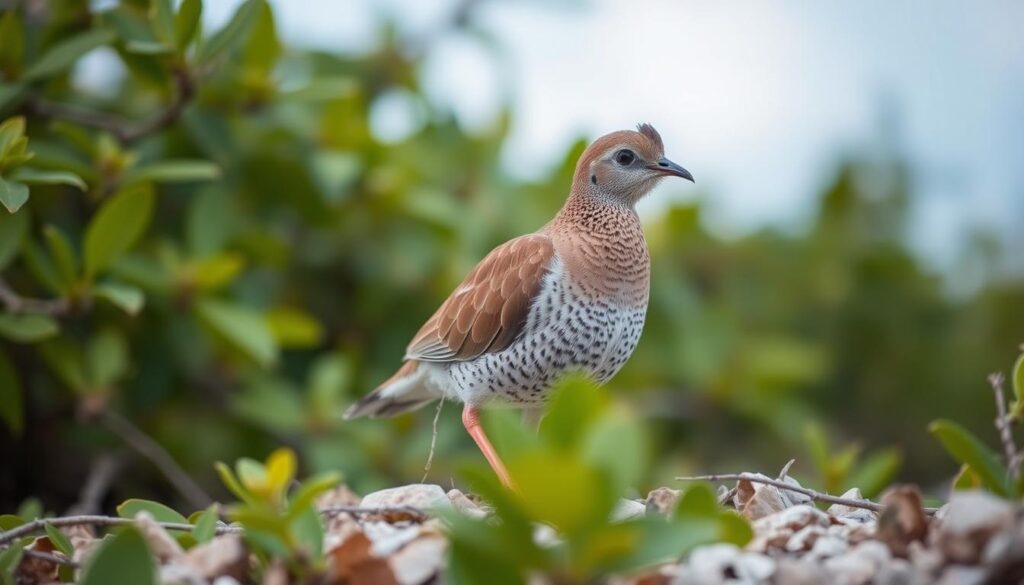
The Key West Quail-Dove needs urgent conservation due to environmental threats. It’s listed as Least Concern, but habitat loss and human impact are big problems. These threats can get worse if we don’t act fast.
Human Impact and Habitat Loss
Humans are harming the Key West by building more cities and farms. This destroys the homes of many endangered birds, including the Key West Quail-Dove. It also breaks up the land these birds need to survive.
Without enough land, these birds lose their food and places to nest. This makes it harder for them to live.
Conservation Status and Efforts
There are efforts to save the Key West Quail-Dove from these threats. These include fixing up habitats and making laws to protect them. One key step is the Federal Migratory Bird Special Purpose Game Bird permit.
| Permit Type | ePermit ID | Cost |
|---|---|---|
| Federal Migratory Bird Special Purpose Game Bird | 3-200-10e | $75 (non-refundable) |
Also, teaching people about birds and nature is crucial for conservation. By learning how important it is to protect wildlife, people can help. Together, we can make a safe place for the Key West Quail-Dove and other animals.
Key West Quail-Dove’s Diet and Foraging Behavior
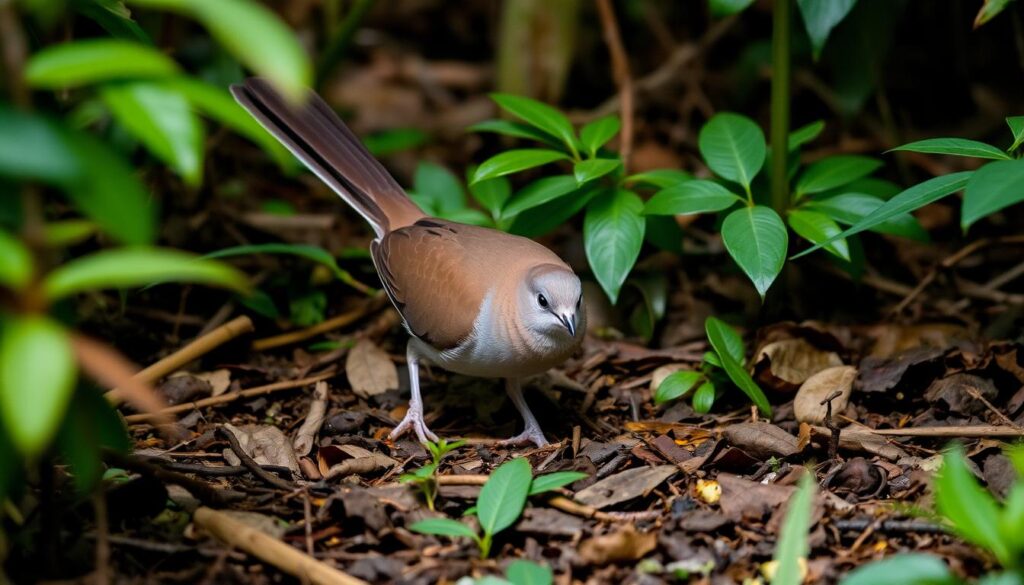
The Key West Quail-Dove is a unique bird species in Key West. It has a varied diet that shows how well it fits into its environment. Learning about their eating habits is interesting for bird lovers and helps with conservation.
Fruit and Seed Preferences
Key West Quail-Doves spend most of their time on the ground, looking for seeds, berries, and fruits. These foods make up most of what they eat. By eating these, they help spread seeds, which helps plants grow in Florida.
They especially like eating poisonwood fruit, which is common in their area. Eating poisonwood is important for their survival. It also helps with seed dispersal, which is key for their habitat.
The Importance of Poisonwood Fruit in Their Diet
Poisonwood fruit is a big part of the Key West Quail-Dove’s diet. Despite its name, it’s vital for the bird. It helps the bird and also spreads seeds, which is good for the environment.
Studies show that how these birds eat can tell us about the health of their environment. They pick up seeds and fruits, helping nature to heal and grow.
To learn more about the Quail Dove’s home and needs, check out options for creating safe outdoor spaces here.
| Fruit | Preference by Key West Quail-Dove |
|---|---|
| Poisonwood | Highly Preferred |
| Guazuma parvifolia | Moderately Preferred |
| Hamelia patens | Moderately Preferred |
| Ficus havanensis | Avoided |
This table shows the different fruits that are key to the Key West Quail-Dove’s diet. It highlights their specific likes, which helps scientists understand their needs better.
Nesting Habits of the Key West Quail-Dove
The Key West Quail-Dove is a key species in Florida birds. Its nesting habits are vital for bird conservation. Knowing these habits helps protect these unique birds.
Nest Construction and Egg-Laying
The Key West Quail-Dove builds a fragile platform for its nest. It’s usually in dense thickets or low in small trees. This helps protect their eggs and young. They lay two eggs that match their surroundings, helping them hide from predators.
Parental Roles and Chick Rearing
Both parents take turns caring for their eggs during the 12-day incubation. After hatching, the chicks depend on their parents for food and safety. This teamwork is key to their survival.
Studying the Key West Quail-Dove’s breeding and parenting helps us understand Florida birds better. It also highlights the importance of protecting their habitats. Resources like Java Sparrow bird conservation can inspire conservation efforts.
The Significance of Bird Watching Destinations for the Key West Quail-Dove
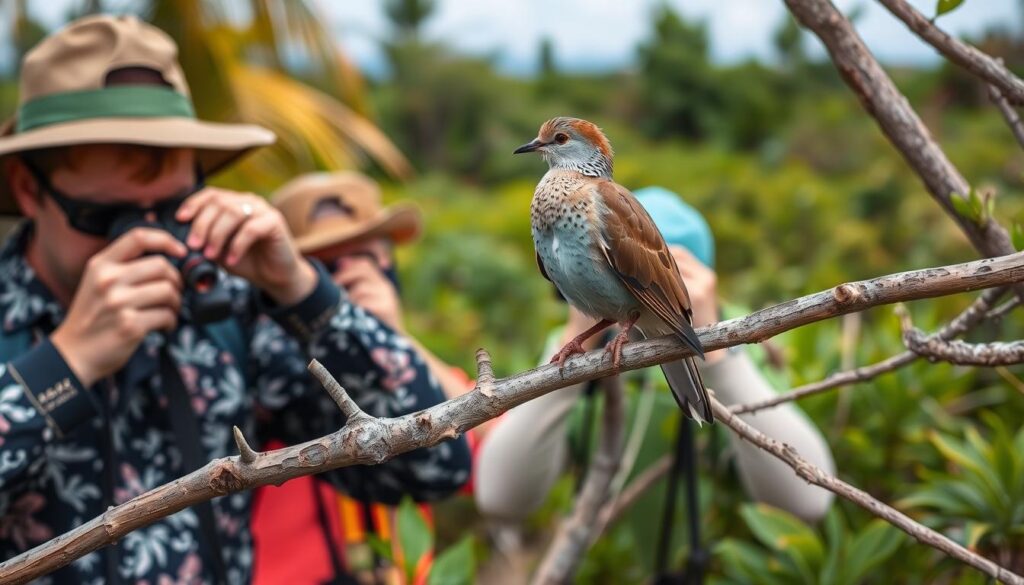
Key West is known for its lively Key West wildlife. It invites bird watchers from all over the world. The Key West Quail-Dove is a special bird that shows how rich the area is in wildlife. It also highlights the importance of bird watching in protecting nature.
This bird is known for its stunning looks, as John James Audubon once said. Bird watching in Key West brings joy to those who do it. It also helps the local environment and economy by supporting eco-tourism.
| Year | Event | Impact |
|---|---|---|
| 1832 | Audubon names the Key West Quail-Dove | Increase in initial interest and documentation |
| 2002 | Last sighting in South Florida | Highlighted rarity and urgent conservation need |
| Annual | Florida Keys Birding and Wildlife Festival | Attracts global birders, spotlighting Key West’s avian diversity |
Bird watching spots like Key West are key for research and learning. They bring together experts and bird lovers to study birds like the Key West Quail-Dove. This helps us understand how they move, live, and behave.
Visiting these places helps keep the interest in bird watching Key West alive. It also supports the work of saving their homes, which helps local conservation efforts.
Birding events like the Florida Keys Birding and Wildlife Festival make people more aware of these issues. They show off the beauty of the Key West Quail-Dove and talk about the big challenges birds face worldwide.
In short, Key West and its bird watching spots are crucial for saving the Key West Quail-Dove and other birds. Every time someone sees a bird, takes a photo, or visits, they help send a strong message. This message is about caring for our planet and working together to protect it.
Ornithology Key West: Studying Local Bird Species
In Key West, ornithology is more than a study; it’s a way to protect nature. The area is home to a wide variety of Florida birds. These birds make Key West a key spot for bird conservation efforts.
Scientists here study the local birds’ behaviors and how they live. They focus on species like the Key West Quail-Dove. This work is vital for protecting local and Florida’s ecosystems.
Research Contributions to Bird Conservation
Studies on the endangered White-fronted Quail-Dove show how changes affect them. Researchers in Key West gather important data. This helps make plans to save these birds and others.
The Role of Citizen Science in Bird Observation
Citizen science is key in Key West. Local people help by recording bird sightings and behaviors. This work adds to the science and connects people with nature.
This mix of professional research and community help is powerful. It helps protect birds and their homes. This approach is a model for bird conservation worldwide.
Key West Wildlife: Coexisting with the Key West Quail-Dove
In Key West, the Key West Quail-Dove is a key part of the local wildlife. It’s one of the many endangered bird species that make the area’s ecosystems rich and diverse. Andros Island, with its vast 6,000 km2, is a vital habitat for these birds, much like Florida’s own environments.
Despite having fewer than 10,000 people, Andros Island is seeing more development. This highlights the need for a balance that respects both human needs and the wildlife. The eastern coasts and northern islands are seeing more activity, which affects the Key West wildlife.
A study from April 24 to April 30, 2010, showed the importance of Andros’s pine forests and coppice. These forests, especially the old-growth ones in South Andros, are crucial for many species. However, fires and human actions have damaged much of the second-growth forests, which is a common issue for endangered birds.
It’s vital to monitor and conserve these forests to protect the Key West wildlife. This includes the endangered bird species that call these forests home.
Research on human development and bird populations is crucial. A study with 444 FeederWatchers in Florida showed how the Eurasian Collared-Dove has spread since its introduction in 1982. While these doves do well in areas changed by humans, native birds like the Key West Quail-Dove face a delicate balance.
This balance tells us a lot about our habitats and our responsibility to protect them. By working together, we can help ensure that many Florida birds will still be around for future generations. This will keep our skies beautiful and our ecosystems healthy.
